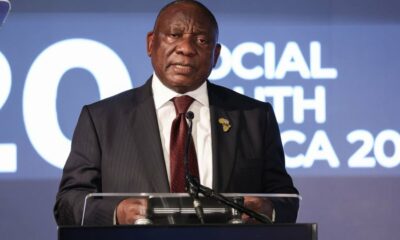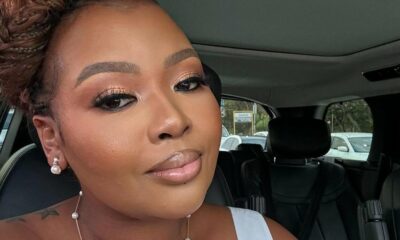Culture Craze
The Purple Movement: How One Colour Is Uniting South Africa Against GBVF

A country choosing visibility over silence
This Friday, South Africa will be awash in shades of purple. The call is simple. Wear something purple on 21 November to stand with women and children whose lives have been shattered by gender-based violence and femicide. It is not a fashion trend. It is a national act of solidarity that arrives at a time when the country is desperate for unity, compassion, and accountability.
The movement is driven by Women for Change, one of the country’s most recognisable voices in the fight for justice and support for survivors. Their message is urgent. GBV should be treated as a national disaster. The public response has been strong, with many South Africans already sharing purple-themed outfits and reminders across social media in the build-up to the shutdown.
The meaning stitched into every shade
Designer Gert Johan Coetzee says purple was not chosen by accident. The colour has a long history linked to dignity, courage, and transformation. Coetzee believes that lighter shades express empathy, while deeper violets show resilience and unity.
He explains that soft lavender brings a sense of compassion and gentleness, while richer hues speak to the unbreakable spirit of survivors. When the tones are paired together, he says it creates a harmony that feels peaceful yet powerful, a balance that respects the message without overwhelming it.
For Coetzee, intention is everything. He emphasises that wearing purple is not meant to be a performance. It is a gesture that honours those who need to be seen and heard.
How fashion becomes a quiet protest
The designer believes that clothing is capable of carrying meaning without shouting for attention. A purple silk scarf, a ribbon tied neatly on a handbag, an elegant brooch, or a small bracelet can start conversations without overshadowing the purpose.
These details do not compete with the message. They elevate it. Coetzee says that when worn with purpose, they become soft symbols of hope and belief in change. Even those who do not own purple clothing can take part by adding simple touches such as a purple ribbon, a scarf, a charm, or even a bold lip or nail colour.
Men are also encouraged to join in. A pocket square, a tie, or a lapel pin is enough to show support without altering an entire outfit.
A movement strengthened by familiar voices
Springboks captain Siya Kolisi has added his weight to the campaign, encouraging South Africans to put aside the usual green for a day and choose purple instead. His message reflects a broader national feeling. People want to be part of something that pushes back against silence.
All of this has created a sense of collective momentum. Instead of a coordinated outfit moment, this feels like a community choosing to be visible. From tailored jackets to simple ribbons, purple has become a sign of remembrance, resistance, and respect.
Why this moment matters
South Africa’s struggle with GBVF is not new. What feels different is the growing insistence that everyone has a role to play. Clothing has become a tool for connection. The colour sends a message that is gentle yet firm. It signals unity, healing, and accountability.
On this Friday, the country will not only dress up. It will show up. Every shade of purple will carry a story of refusal to look away and a promise to stand with survivors until change becomes real.
Follow Joburg ETC on Facebook, Twitter, TikT
For more News in Johannesburg, visit joburgetc.com
Source: IOL
Featured Image: iStock
























